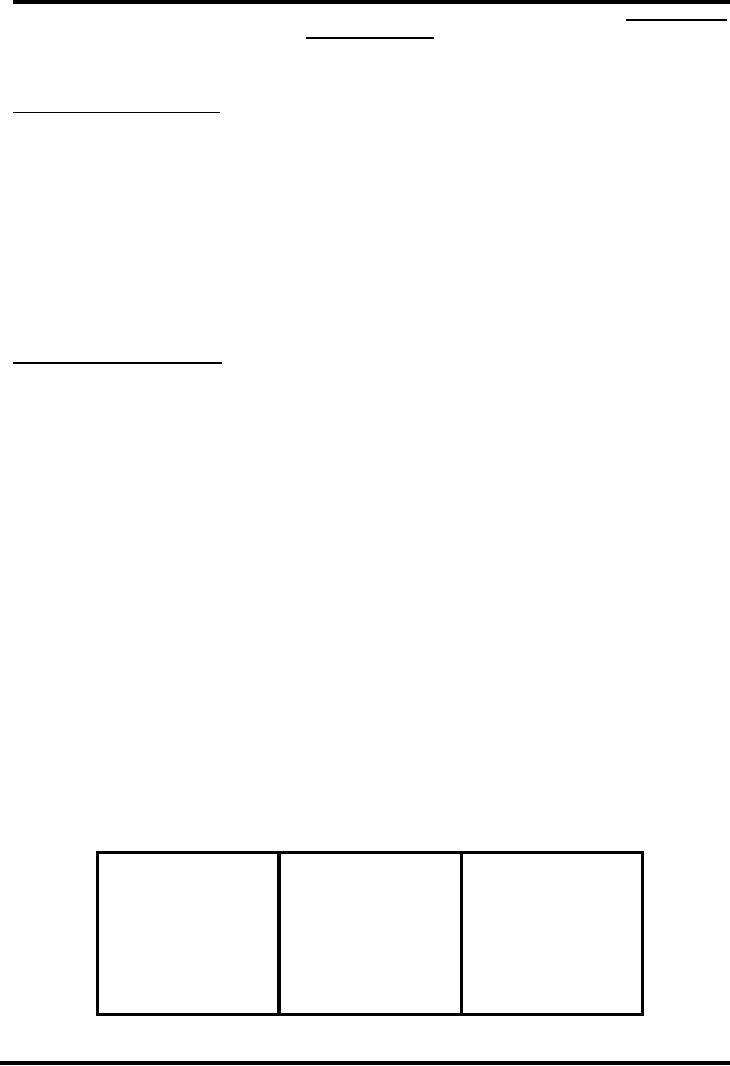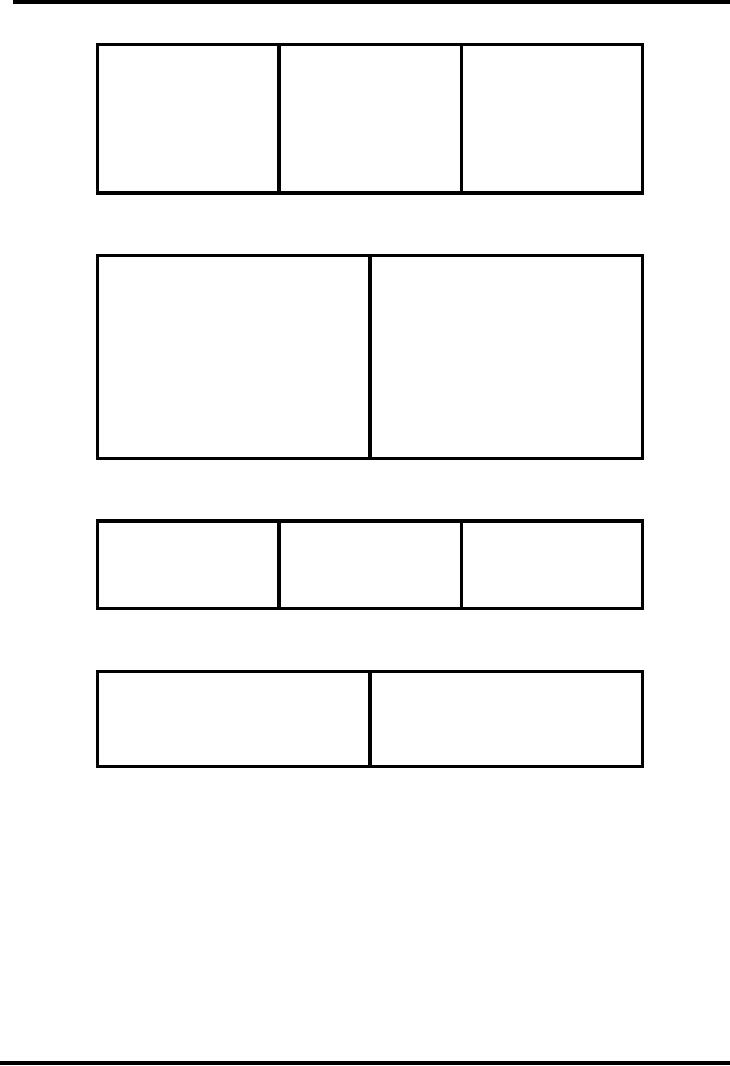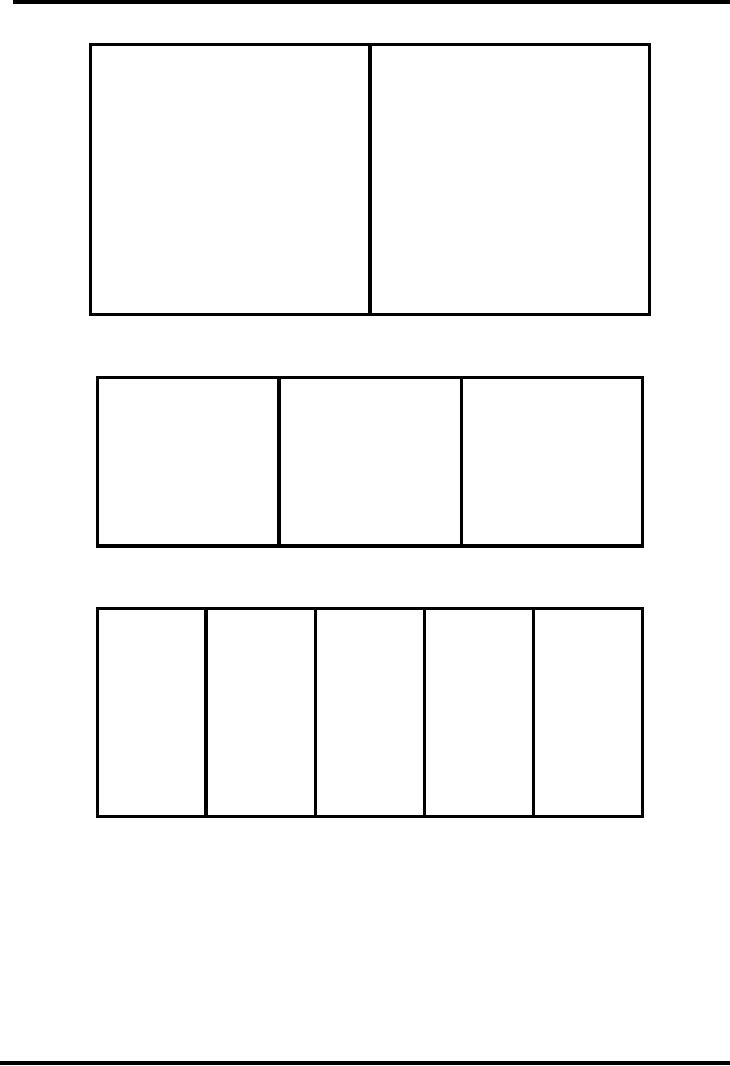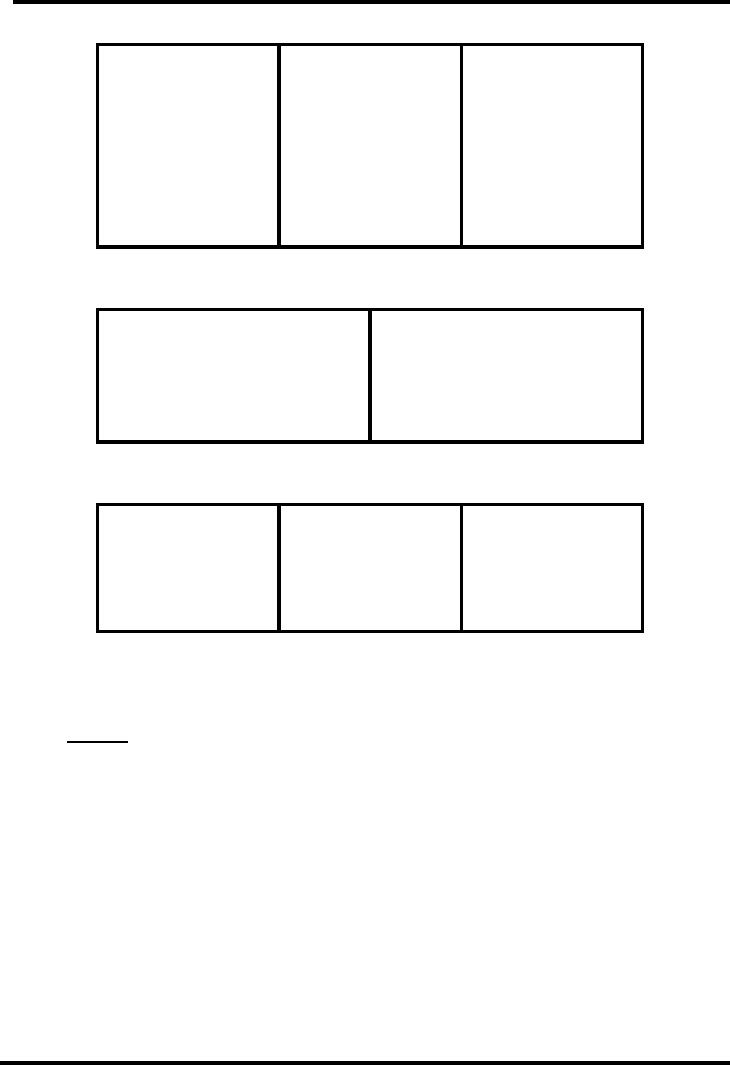 |
SIGNAL WORDS:Non word Emphasis Signals |
| << ESSAY WRITING:VARIOUS STRATEGIES FOR ESSAYS, PROMPTS |
| EXPOSITORY WRITING:LOGICAL FALLACIES, APPEAL TO EMOTION >> |

Journalistic
Writing MCM310
VU
LECTURE
23
SIGNAL
WORDS
Compare
the following two paragraphs
for signal words.
1.
Benefits of Private Vehicles
Private
vehicles play a key role in
our lives. They provide
independent transport, freedom and
many
jobs.
They cause pollution,
traffic jams, noise and
death.
Private
transport, especially the car, gives us
freedom to move. We no longer need to
organize our
lives
around our bus or train
timetables. Many people think
that their cars are
indispensable machines. They
cannot
live without them. People
who live in rural areas
need private vehicles to go to towns
for shopping,
socializing,
taking children to schools,
etc. Without a car their
lives would be very difficult. They
would be
forced
to rely on infrequent public transport, if it
existed at all. Many families
who live in the country have
one
or
more cars. They would be cut
off from the rest of the
world.
For
many people a car is a
necessity.
2.
Benefits of Private Vehicles
Private
vehicles play a key role in
our lives,
as they
provide independent transport, freedom and
many
jobs;
however, they
cause pollution, traffic
jams, noise and
death.
Firstly,
Private transport,
especially the car, gives us freedom to
move,
so we no longer
need to
organize
our lives around our bus or
train timetables. Secondly,
many
people think that their cars
are
indispensable
machines and
they cannot
live without them. For
example, People
who live in rural areas
need
private
vehicles to go to towns for shopping,
socializing, taking children to
schools, etc. Without a car
their
lives
would be very difficult;
as a result, they
would be forced to rely on infrequent
public transport, if it
existed
at all. That
is why; many
families who live in the
country have one or more
cars. Otherwise,
they
would
be cut off from the rest of
the world.
From
this we see, for
many people a car is a
necessity.
To
improve your writing you
need to make sure that
your ideas, both in
sentences and
paragraphs,
stick
together or have coherence and
that the gap between ideas
is bridges smoothly. One way to do this
is by
using
transitions - words or phrases or
techniques that help bring
two ideas together. Transitional
words and
phrases
represent one way of gaining
coherence. Certain words help continue an
idea, indicate a shift of
though
or
contrast, or sum up a
conclusion.
Check
the following list of words to
find those that will
pull your sentences and
paragraphs together.
List
of Signal Words:
Continuation
Signals (Warning-there
are more ideas to come.)
first
of all
also
more
secondly
likewise
one
reason
thirdly
next
similarly
moreover
with
a
final reason
furthermore
other
and
finally
what
is more
too
last
of all
and
another
again
in
addition
77

Journalistic
Writing MCM310
VU
Change-of-Direction
Signals (Like
contrasts; Watch out-we're
doubling back.)
although
but
conversely
despite
different
from
even
though
however
in
contrast
instead
of
in
spite of
nevertheless
otherwise
the
opposite
on
the contrary
on
the other hand
rather
still
yet
while
though
Sequence
Signals (There
is an order to these ideas.)
first,
second, third
A,
B, C
in
the first place
for
one thing
then
next
before
now
after
while
into
(far into the night)
until
last
during
since
always
o'clock
on
time
later
earlier
Time
Signals (When
is it happening?)
When
immediately
now
lately
already
little
by little
at
the same time
final
after
awhile
once
during
Illustration
Signals (Here's
what that principle means in
reality.)
for
example
specifically
for
instance
to
illustrate
such
as
much
like
in
the same way as
similar
to
78

Journalistic
Writing MCM310
VU
Emphasis
Signals (This
is important.)
a
major development
it
all boils down to
a
significant factor
most
of all
a
primary concern
most
noteworthy
a
key feature
more
than anything else
a
major event
of
course
a
vital force
pay
particular attention to
a
central issue
remember
that
a
distinctive quality
should
be noted
above
all
the
most substantial
issue
by
the way
the
main value
especially
important
the
basic concept
especially
relevant
the
crux of the matter
especially
valuable
the
chief outcome
important
to note
the
principal item
Cause,
Condition, or Result Signals
(Condition
or modification is coming up.)
because
if
of
for
from
so
while
then
but
that
until
since
as
whether
in
order that
so
that
therefore
unless
yet
thus
due
to
resulting
from
consequently
without
Spatial
Signals (This
answers the "where"
question.)
between
below
about
left
alongside
here
outside
around
close
to
far
right
over
away
side
near
near
in
into
beside
middle
next
to
beyond
north
east
on
opposite
over
south
there
inside
in
front of
under
these
out
behind
across
this
adjacent
above
toward
west
by
upon
79

Journalistic
Writing MCM310
VU
Comparison-Contrast
Signals (We
will now compare idea A with
idea B.)
and
or
also
too
best
most
either
less
less
than
more
than
same
better
even
then
half
much
as
like
analogous
to
but
different
from
still
yet
however
although
opposite
rather
while
though
Conclusion
Signals (This
ends the discussion and may have special
importance.)
as
a result
finally
from
this we see
in
summary
hence
therefore
consequently
in
conclusion
last
of all
Fuzz
Signals (Idea
is not exact, or author is
not positive and wishes to
qualify a statement.)
almost
if
looks
like
maybe
could
some
except
should
alleged
nearly
might
reputed
seems
like
was
reported
purported
sort
of
probably
Non
word Emphasis Signals
�
Exclamation
point (!)
�
underline
�
italics
�
bold
type
�
subheads,
like The
Conclusion
�
indentation
of paragraph
�
graphic
illustrations
�
numbered
points (1, 2, 3)
�
Very
short sentence: Stop
war.
�
"quotation
marks"
80

Journalistic
Writing MCM310
VU
Practice
with signal words:
Example
1:
Creative
thinking usually involves
five stages
(classification).
First
(sequence), the
problem is
defined.
Second
(sequence),
creative thinkers saturate themselves
with as much information as they
can find.
Then
(sequence) come
the incubation stage. Next
(sequence) problem
solving moves to an unconscious
level
as the mind ponders different
possible, or even impossible, solutions.
The incubation stage
(classification)
is
followed
by (sequence) illumination.
By illumination, we
refer to (definition) a
period of
sudden
understanding or insight. Finally
(sequence),
there is the verification stage, when
solutions or answers
are
critically evaluated. (9
signal words)
Example
2:
If
we study a child's handwriting, certain
personality types
(classification) are
revealed. First
(sequence), if
children have handwriting
that is slanted only a
little to the right or is straight up and
down, they
have
a moderate temperament and
use good judgment. This
type
(classification) is
usually affectionate and
sharing.
Second
(sequence), if the
handwriting slants to the far
right, they are usually
emotional children
who
react
quickly. Their quick
responses are often negative
responses. The third
(sequence) type (classification),
children
who write with a backhand
slant, are very logical, unemotional, and
sometimes very insecure.
Therefore
(stop),
their world seems to revolve
around themselves rather than around friends
and loved ones.
(7
signal words)
Exercise
on signal words.
Do
as have been asked.
1.
Make these two sentences
into one using the
conjunction "because":
a)
The Harrison's were having a
party.
b)
Their daughter was getting
engaged.
2.
Join these two sentences
into one using the
transition "therefore":
a)
The police issued a warning on the
radio.
b)
A dangerous man had escaped
from hospital.
3.
Link these two sentences
using the transition
"however":
a)
Marie was worried about the
killer.
b)
Her husband was only
worried about the
car.
4.
Link these sentences using
the conjunction "so":
a)
George went to find help.
b)
The car broke
down.
5.
Link these sentences using
the conjunction "since":
a)
Marie could not walk in the rain.
b)
Her clothes were not
suitable.
6.
Link these sentences using
the conjunction "so that":
a)
No-one could see her.
b)
Marie hid under a blanket.
81

Journalistic
Writing MCM310
VU
7.
Link these sentences using
the conjunction "as a result":
a)
Marie heard a strange sound
on the roof.
b)
She became very
frightened.
8.
Link these sentences using
the conjunction "as":
a)
The knocking continued all
night.
b)
Marie could not
sleep.
9.
Link these sentences using a
conjunction:
a)
Several policemen leapt
out.
b)
One of them rushed towards the
car.
10.
Link these sentences using a
conjunction:
a)
The policeman told Marie
not to look back.
b)
She could not help it
Source:
Fry, Edward Bernard. `The
Reading Teacher's Book of Lists' New
York: The Centre
for
Applied
Research Foundation.
1993
82
Table of Contents:
- INTRODUCTION TO JOURNALISTIC WRITING:Practical, THINGS TO KNOW
- QUALITIES OF GOOD WRITERS
- QUALITIES OF GOOD WRITERS
- QUALITIES OF GOOD WRITING:Achieve appropriate readability:
- QUALITIES OF GOOD WRITING:Be concise, Be creative, Be correct
- THE PROCESS OF WRITING:INVENTION, WHEN YOU START TO WRITE
- THE PROCESS OF WRITING II:ORGANIZING, DRAFTING, REVISING
- ALL ABOUT WORDS:HOW WORDS ARE FORMED?:SUFFIXES
- DICTIONARY-A WRITER’S LANGUAGE TOOL:KINDS OF INFORMATION
- PARTS OF SPEECH:Noun Gender, Noun Plurals, Countable Nouns
- BASIC CLAUSE PATTERNS
- ACTIVE AND PASSSIVE VOICE
- MODIFIERS AND SENTENCE TYPES:COMPOUND SENTENCES
- REPORTED SPEECH:Indirect Questions, Direct commands
- GRAMMATICAL SENTENCE – ISSUES:SUBJECT-VERB AGREEMENT
- GRAMMATICAL SENTENCE – ISSUES II:SENTENCE FRAGMENTS
- EFFECTIVE SENTENCE:PARALLELISM, NEEDED WORDS, SHIFTS
- STYLE: GUIDELINE AND PITFALLS I:COLLOQUIAL VS FORMAL, CIRCUMLOCUTION
- STYLE: GUIDELINE AND PITFALLS II:AMBIGUITY, REDUNDANCY, EUPHEMISM:
- PARAGRAPH WRITING: TYPES AND TECHNIQUES:STRUCTURE
- PARAGRAPH WRITING: TYPES AND TECHNIQUES:Putting on Our Play
- ESSAY WRITING:VARIOUS STRATEGIES FOR ESSAYS, PROMPTS
- SIGNAL WORDS:Non word Emphasis Signals
- EXPOSITORY WRITING:LOGICAL FALLACIES, APPEAL TO EMOTION
- THE WRITING STYLES: REPORT and NARRATIVE WRITING, SHORT REPORTS
- THE WRITING STYLES: DESCRIPTIVE AND PERSUASIVE WRITINGS, Observation
- RESEARCH WRITING AND DOCUMNETING SOURCES:Handling Long Quotations
- Summary and Précis Writing:CHARACTERISTICS OF GOOD SUMMARY
- Punctuation:THE PERIOD, THE COMMA, THE SEMICOLON, THE COLON
- MECHANICS:ABBREVIATIONS, NUMBERS, SPELLING, THE HYPHEN
- READING SKILLS FOR WRITERS:EDUCATED READING, STEPS
- PARTS OF A NEWSPAPER:Box-out, By-line, Caption, Exclusive, Feature
- THE LANGUAGE OF THE NEWSPAPERS II:BROADSHEET NEWSPAPER
- News Writing and Style I:WHAT TO LOOK FOR IN A NEWSPAPER
- NEWS WRITING II:Accuracy, Clarity, Style, Qualities of Effective Leads
- EDITORIAL WRITING:WRITING AN EDITORIAL:STRUCTURING AN EDITORIAL
- WRITING FEATURES:GENERATING FEATURE STORY IDEAS
- WRITING COLUMNS:Column and a news report, Purpose, Audience
- WRITING ARTICLES FOR NEWSPAPERS:The Heading, The Lead
- WRITING ANALYSIS:purpose, scope, method, results, recommendations
- LETTERS TO EDITORS:Four important aspects about letters, Organizing letters
- BROADCAST AND WEB NEWS WRITING:WRITE CONCISELY, BROADCAST STYLE
- WRITING PRESS RELEASE, REVIEWS AND OBITUARIES:Summary of Content:
- THE ART OF INTERVIEWINGS
- FINAL THOUGHTS:Practical, Job-Related, Social, Stimulating, Therapeutic